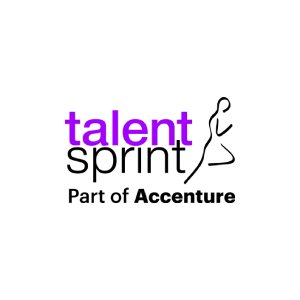What is Business Analytics? The Complete Guide

Business analytics involves leveraging data, statistical methods, and technology to evaluate business performance, identify trends, and support informed decision-making. Data has become the fabric that weaves organization together, shaping decisions, driving growth, and uncovering hidden opportunities. Yet, raw data alone is meaningless without the lens of business analytics, the powerful bridge between numbers and strategy.
In this complete guide, we’ll unravel how business analytics transforms data into actionable insights that fuel smarter choices, innovation, and long-term success.
What is Business Analytics?
Business analytics definition: It is the process of using data to identify patterns, solve problems, and make smarter decisions that help businesses work more effectively. By leveraging business analytics, organizations gain actionable insights into operations, customer behavior, and market trends empowering smarter decisions, minimizing risks, and maximizing efficiency and profitability.
Types of Business Analytics
Business analytics is all about turning data into insights that help businesses make smarter decisions. At its core, it is divided into four main types, each serving a unique purpose:
1. Descriptive Analytics: Describes past events by analyzing historical data to show what happened. It helps businesses understand trends and performance.
2. Diagnostic Analytics: Diagnostic analytics goes deeper to reveal patterns and root causes. Rather than spending hours searching for answers, it provides interactive tools to explore data and identify why sales dropped or why a campaign succeeded.
3. Predictive Analytics: Uses historical data and statistical models to forecast future outcomes. It helps anticipate trends, customer behavior, and potential risks.
4. Prescriptive Analytics: Recommends the best actions to achieve desired results using data-driven insights. It guides decision-making to optimize outcomes and strategies.
How Does Business Analytics Work?
Understanding the process of business analytics helps businesses turn raw data into strategic insights and better decisions.
Step 1: Data Collection
Think of your business as a busy ecosystem where data is constantly generated. Customer details come from CRMs, sales figures from POS systems, website interactions from marketing tools, and inventory or delivery updates from logistics platforms. Business analytics brings all this scattered data together, giving you a complete, real-time view of your operations.
Step 2: Data Preparation
Raw data is often messy and inconsistent. Customer records may not match across systems, and sales numbers could be in different formats. Data preparation cleans and organizes this information, removing duplicates, correcting errors, and filling in missing pieces so you can rely on your insights.
Step 3: Data Analysis
With clean data in hand, it’s time to uncover answers. Why did sales dip last month? Which products are trending in certain regions? By using statistical techniques and advanced machine learning models, business analytics identifies patterns, trends, and root causes, helping you make data-driven decisions instead of relying on guesswork.
Step 4: Visualization and Interpretation
Data alone can be overwhelming. Business analytics turns numbers into visuals dashboards, charts, and interactive reports that make complex information easy to understand. This enables teams across marketing, sales, and operations to see what’s happening and understand why it matters, making decision-making faster and smarter.
Business Analytics Tools and Techniques
Data analysis isn’t just about crunching numbers, it’s about transforming them into actionable insights that drive smarter decisions and real business growth. To do this effectively, businesses rely on a variety of tools and techniques:
1. Data Mining: Data mining helps uncover hidden patterns, correlations, and trends in large datasets. Techniques like clustering, classification, and anomaly detection reveal the insights that guide smarter decisions.
2. Data Warehousing: A data warehouse acts as the central hub for all your business data from apps and IoT devices to spreadsheets and social media. It organizes, cleans, and stores information so it’s ready for deep analysis.
3. Data Visualization: Visualization tools transform complex data into easy-to-understand charts, graphs, and dashboards. They help communicate insights clearly, making it easier for teams across the organization to act on them.
4. Forecasting: Forecasting uses historical data and current trends to predict future outcomes, such as revenue, customer demand, or inventory needs helping businesses plan proactively rather than reactively.
5. Machine Learning Algorithms: Machine learning programs learn from data to make predictions and identify patterns automatically. They help businesses generate faster, more accurate insights, from spotting customer behavior trends to detecting anomalies.
6. Statistical Analysis
Sound statistics form the foundation of reliable insights. By testing hypotheses, identifying correlations, and applying rigorous methods, statistical analysis ensures your decisions are backed by solid evidence.
These tools and techniques work together to give businesses a complete, data-driven understanding of their operations, helping them make smarter, faster, and more confident decisions.
Benefits of Business Analytics
Informed Decision-Making: With data-driven insights, businesses can move beyond guesswork, making smarter, more strategic decisions based on real-time trends and customer behavior.
Operational Efficiency: Analytics help spot bottlenecks, streamline workflows, and optimize resources reducing downtime and improving overall service delivery.
Cost Reduction: By identifying inefficiencies and unnecessary expenses, businesses can reallocate budgets wisely, cut waste, and lower operational costs.
Customer Understanding & Engagement: Analytics reveal deep insights into customer preferences and buying patterns, enabling personalized marketing, tailored product offerings, and better customer satisfaction.
Risk Management: Predictive models help forecast potential risks, allowing businesses to take proactive steps to prevent problems before they arise.
Competitive Advantage: Companies leveraging analytics can spot market trends early, adapt quickly to changes, and stay ahead of competitors who rely on traditional methods.
Increased Revenue & Profitability: Better customer targeting, optimized operations, and data-backed strategies directly drive revenue growth and higher profitability.
Performance Measurement: Analytics enables continuous monitoring of key performance indicators (KPIs), offering clear metrics to track progress and evaluate the success of initiatives.
What Do Business Analysts Do?
Business analysts help organizations identify ways to improve efficiency and strengthen business processes. They collaborate with teams across all levels of the company to communicate insights and support the implementation of effective solutions.
Key tasks and responsibilities include:
- Identifying and prioritizing business and technical requirements.
- Analyzing large datasets using tools like SQL and Excel.
- Creating charts, tables, and other visualizations to present data clearly.
- Building financial models to guide strategic decisions.
- Understanding the company’s goals, strategies, and requirements.
- Planning enterprise architecture to structure business processes effectively.
- Conducting forecasting, budgeting, and performing financial and variance analysis.
In essence, business analysts turn data and business knowledge into actionable insights that drive smarter decisions and organizational growth.
Skills You Need as a Business Analyst
Business Analytics, professionals in the field should possess both technical and interpersonal skills to effectively translate data into actionable business insights. These skills enable them to navigate complex data landscapes and communicate findings to stakeholders.
Technical Skills
- SQL: SQL lets you interact with databases to retrieve, update, and manage data efficiently. It’s the foundation for extracting the information needed for analysis.
- Statistical Languages (R/Python): Tools like R and Python help analyze large datasets, perform statistical calculations, and build predictive models. They enable deeper insights beyond basic reporting.
- Data Visualization Tools (Tableau/Power BI): Visualization tools turn complex data into easy-to-understand charts, graphs, and dashboards. They help communicate insights clearly to stakeholders and guide decisions.
Interpersonal Skills
- Communication: Clearly explain complex data findings so non-technical stakeholders can understand and act on them. Effective communication ensures insights drive real business decisions.
- Problem-Solving: Use data to identify challenges, uncover patterns, and propose actionable solutions. This helps organizations address issues proactively.
- Critical Thinking: Analyze and evaluate data to determine its accuracy, relevance, and implications. It ensures decisions are based on sound reasoning rather than assumptions.
- Visualization: Convert raw data into charts, graphs, and dashboards that make insights easy to understand. Visualization helps communicate findings effectively across teams.
- Attention to Detail: Carefully check and validate data to ensure accuracy in analysis and reporting. Small errors can lead to costly business mistakes if overlooked.
- Detail oriented and big picture thinking capability: Connect data insights to overall business goals and strategy. It ensures analytics supports long-term growth and organizational priorities.
These competencies are crucial for professionals aiming to leverage data effectively in business decision-making.
Future Outlook of Business Analytics Career in India
According to the Bureau of Labor Statistics, employment for management analysts including business analysts is projected to grow by 11% between 2021 and 2031, significantly faster than the average growth rate for all occupations.
The business analytics sector in India is poised for significant growth, with projections indicating an annual increase in demand for analytics professionals. This trend is fueled by the digital transformation initiatives across sectors such as finance, healthcare, and retail. Professionals with expertise in AI, machine learning, and data visualization tools are particularly sought after.
Top Business Analytics Courses to Choose from
1.CCE IISc - Business Analytics Course
This Advanced Certification in Business Analytics is aimed at tech‑savvy professionals with 2+ years of experience who want to build or deepen strong quantitative, statistical, machine learning, and prescriptive analytics skills.
Who is it for? It is well suited for professionals in technical, R&D, operations, or analytics roles who want hands-on modeling, tool mastery (Python, R etc.), and to move into more analytic leadership or specialist roles.
2. XLRI – Post Graduate Certificate in Business Analytics
This Postgraduate Certificate in Business Analytics programme is designed for working professionals with modest to moderate experience (1‑3 years or more), including those already in business, marketing, operations, finance, or IT functions who need a foundational to intermediate level of analytics capability.
Who is it for? It is ideal for those who want to gain practical analytics skills (tools, models) without committing to a heavy full‑time program, and those who want to integrate analytics competently into their current functional roles.
3. IIM Calcutta – Senior Management Programme in Business Analytics
The senior management programme in business analytics is designed for senior leaders/executives, who are less about doing deep technical modeling themselves and more about steering strategic analytics in their organizations. The curriculum emphasizes data strategy, leading analytics teams, risk, uncertainty, predictive & prescriptive frameworks, embedding analytics into decision making, and scaling analytics & AI in business.
Who is it for? This programme is tailored for senior leaders and executives with extensive professional experience. It is ideal for those looking to drive strategic, high-impact decisions through data and analytics, rather than getting involved in the technical execution.
Final Thoughts
In today’s data-driven world, business analytics has become the backbone of smarter decision-making, operational efficiency, and competitive advantage. From understanding customer behavior to optimizing business processes, the insights derived from analytics empower organizations to make informed, strategic choices. For aspiring professionals, mastering business analytics opens doors to high-growth roles across industries, offering opportunities to influence key business outcomes.
A business analytics course is an ideal way to build the essential skills from SQL and statistical analysis to data visualization and critical thinking needed to thrive in this field. With structured learning, hands-on projects, and exposure to industry-standard tools, such a course equips you to transform raw data into actionable insights and advance confidently in your analytics career.
Frequently Asked Questions
Q1. What exactly is business analytics?
Business analytics is the systematic exploration of an organisation's data to derive meaningful insights for decision-making. It involves using statistical methods and computing technologies to process, analyse, and visualise data, uncovering patterns and relationships that enable better business choices.
Q2. What are the main types of business analytics?
There are four main types of business analytics: descriptive analytics (tracking what happened), diagnostic analytics (understanding why it happened), predictive analytics (forecasting what might happen), and prescriptive analytics (recommending what should be done).
Q3. How does business analytics differ from business intelligence?
While business intelligence focuses on understanding past and current business operations using historical data, business analytics emphasises predictive analysis and generating actionable insights for future trends and opportunities. Business analytics is more forward-looking and strategic in nature.
Q4. What are some key tools used in business analytics?
Important tools in business analytics include data warehousing platforms for storage, visualisation tools like Tableau and Power BI for presenting insights, machine learning algorithms for predictive modelling, and statistical analysis techniques for uncovering patterns and relationships in data.
Q5. How can businesses benefit from implementing analytics?
Businesses can benefit from analytics in various ways, including improving customer experiences through personalised insights, optimising operations and supply chain efficiency, enhancing marketing ROI with campaign analytics, and supporting more effective financial planning and pricing strategies. These applications can lead to increased revenue, reduced costs, and better decision-making across the organisation.

TalentSprint
TalentSprint is a leading deep-tech education company. It partners with esteemed academic institutions and global corporations to offer advanced learning programs in deep-tech, management, and emerging technologies. Known for its high-impact programs co-created with think tanks and experts, TalentSprint blends academic expertise with practical industry experience.



